Just to be clear: it’s way too early to be sure how the new SR-520 tolls will affect Seattle traffic over the long haul. Still, as an I-5 commuter, I’ve found the effects of tolling both dramatic and fascinating.
Take a look at the animation below, comparing yesterday morning’s rush-hour with traffic from 4 weeks prior. Not only was 520 a breeze after tolling started, but the traffic seemed to ease on I-5 southbound as well—and perhaps even on 405 southbound north of the turnoff to 520.
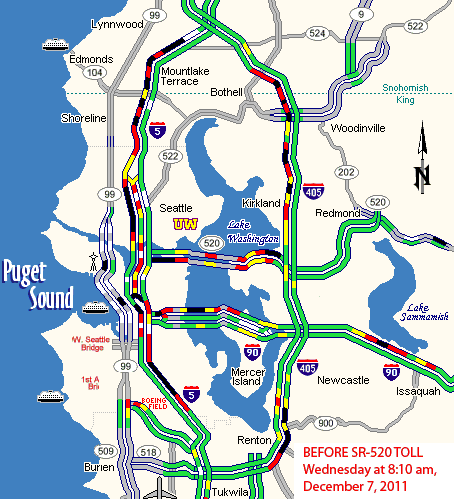 I chose December 7 more or less at random, but the traffic map for that day is familiar: Wednesday morning rush hour is typically the most congested day of the week, with long backups on I-5 southbound heading towards the turnoff to SR-520 (the northern of the two cross-lake routes). Yesterday, though, it was smooth sailing into downtown.
I chose December 7 more or less at random, but the traffic map for that day is familiar: Wednesday morning rush hour is typically the most congested day of the week, with long backups on I-5 southbound heading towards the turnoff to SR-520 (the northern of the two cross-lake routes). Yesterday, though, it was smooth sailing into downtown.
Obviously, we shouldn’t read too much into a this kind of tiny sample. There could have been lots of reasons why traffic was bad on December 7, and why it was light on January 4. Still, both my personal experience and my read of the trends so far suggest that the 520 tolls have shifted traffic patterns dramatically. And that provides at least some evidence that tolls really can be an effective tool in managing congestion and traffic flows. (Just to be clear, I’m not saying that the traffic shifts automatically demonstrate that tolls are a good idea, or that the net economic impacts of the current tolling system are fair. I’m only saying that the tolls appear to be having a major impact on traffic.)
A few thoughts:
- I have to wonder whether the tolls on 520 are reducing overall traffic volumes across Lake Washington, rather than just shifting drivers from 520 to I-90. It’ll be interesting to see how the numbers fall out over the next few weeks—but if we’re paying for new roads with tolls, and tolls reduce traffic volumes, then the region might have to rethink whether we actually need all of the expensive new road projects that we’re planning. (And that’s especially true if the tolls only pay for a fraction of the cost of the road projects in the first place. If drivers had to pay the full cost of the roads built for their use, you can be sure that they’d do a lot less driving.)
- I think that I-5 traffic trends over the next few months will be as instructive as those on 520 and I-90. If the 520 tolls have eased the rush hour crush on I-5, then perhaps we’ll see what Brookings Institution researcher Anthony Downs calls the “Triple Convergence” effect: free flowing traffic on I-5 during the morning rush could attract drivers from other modes, routes, or times of day, gradually boosting traffic volumes. And that could mean that the congestion reductions resulting from the 520 tolls could be very short-lived.



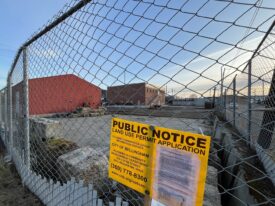
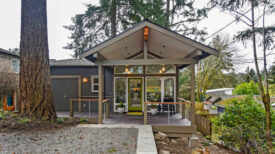
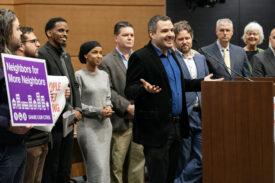
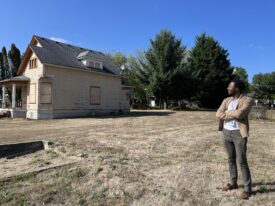

Toll I-90
This is all very interesting, but it’s not worth it. Why are we reshuffling hundreds of thousands of commuters’ days as an experiment? This is not good for Seattle-area workers or businesses.
Toll both bridges at half price. More revenue, normal traffic, cheaper commutes.
Kamala Rao
Excellent animation, Clark! I’ve been thinking of using online traffic maps to do some analysis here in Metro Vancouver, and this is giving me some great ideas.
Kamala Rao
Would also be great to see more days added to the animation and get future updates.
Clark Williams-Derry
If these posts prove popular, I’ll definitely consider a longer-term animation. Maybe a side-by-side, with 2011 vs. 2012? That might show the differences pretty clearly.
Frequent Poster
I’m fascinated by what Sighhtline finds interesting, and even more fascinated by what you’ve ignored.
For those who are paying the toll in both directions every day, a typical month’s worth of tolls costs $308 for workdays only. At a 25% tax bracket, the commuter would need $408 worth of income to pay those tolls, which are not deductible.
Sightline is fascinated by the traffic patterns but displays no curiousity whatsoever about the impact of those tolls on family budgets or on businesses that rely on people’s discretionary income.
Something tells me that whoever runs Sightline is not only liberal and sustainable, but good and rich too.
Eric de Place
FP,
In fact, Sightline has written about the regressive dimensions of transportion more times than I can possibly recall now. Here are just a few examples off the top of my head:
Can tolling be fair?
http://www.sightline.org/2008/11/11/congestion-pricing-the-fairness-issue/
Are vehicle license fees regressive?
http://www.sightline.org/2011/09/28/are-vehicle-license-fees-regressive/
More on vehicle license fees and affordability:
http://www.sightline.org/2011/10/11/do-vehicle-license-fees-make-driving-unaffordable/
A tax loophole that benefits expensive car buyers:
http://www.sightline.org/2011/10/27/washingtons-450-million-tax-giveaway-for-cars/
Federal tax policy, commuting, and regressivity:
http://www.sightline.org/2011/12/13/will-federal-tax-policy-favor-car-commuting/
The regressive impacts of higher fuel prices:
http://www.sightline.org/2009/01/28/time-in-the-tank-updated/
Again, that’s just off the top of my head. I’m not even going to wade into the mountain of stuff we’ve written about income & carbon pricing, or fixing regressive taxes, or income inequality, etc. It’s not a small amount of stuff.
Clark Williams-Derry
I assume you’re not a frequent reader of our blog. Actually, I’m fascinated by the equity implications of transportation policy.
But I don’t have hard data–yet–on how low income folks are *actually* being affected by the tolls. We do know that lower-income folks drive less, are less likely to own cars, and more likely to take transit than other folks. But I do agree that, for lower- and middle-income folks who do need to drive across 520, tolling can be a significant burden — either in tolling costs, or in time, fuel, and depreciation costs for extra driving to avoid the toll.
That said, the main alternative to tolling is using gas tax revenueto pay for transportation infrastructure. And gas taxes are regressive, falling hardest on drivers with low incomes, and would be paid in large part by families who see no tangible benefit from 520. (That’s probably one reason that low-income folks apparently support tolls more than taxes–at least with tolls, the people who benefit from the road are the ones who pay.)
One possible solution to the general regressivity problem of transportation spending is simply to scale back our spending on new infrastructure. Focus on maintenance, rather than fancy new projects, and then some of the big expenses go away. (And in a more general sense, the biggest regressivity problem is land use patterns that lock so many of us into long commutes that are impractical without cars — car ownership is an even bigger financial burden than tolls.)
Anyway, even though your comments are combative, I think we actually agree more than you think!
Frequent Poster
Before I go further, I made a stupid arithmetic error. It would take $204 a month to replace peak tolls, not $408. That’s a $2,450 hit, which is still a big deal for a working person. My sister-in-law is one of them, and the new toll is hitting her hard.
The nature of her job gives her no alternative but to drive, which is also something that the so-called “liberals” around here resolutely refuse to consider. For her, the tolls you support amount to an 8% tax increase on her income.
It kills me how the “liberals” of Puget Sound are dead-set on making the roads here for the rich only. That’s exactly what you’re supporting when you support ruinous tolling for projects that are far too expensive to begin with.
Clark Williams-Derry
No biggie about the math error, FP! That sort of thing happens all the time.
But please do be careful about attributing particular beliefs to me, or to Sightline. You seem to be taking out anger on me. I’m sorry you’re angry, but we actually have never said a single word supporting the expensive expansion of 520 that WSDOT is trying to fund through tolls.
As a general matter, I think that tolls do tend to be a fairer way to raise revenue for transportation projects than gas taxes. Gas taxes are regressive, and funding transportation projects through gas taxes distorts the incentives for road projects. Tax funding lets the state “borrow” money from other drivers to pay for politically favored projects that are often more expensive than they need to be.
But I also think that tolls, including the 520 tolls, have fairness and equity effects that the state hasn’t adequately addressed or even thought through. Moreover, I think we spend too much on major transportation infrastructure expansions in general, and not nearly enough on maintaining the infrastructure we’ve got. I’d prefer a system in which we didn’t spend beyond our means — which would make this entire conversation moot.
Regardless, I do find the adjustments that people are making to tolls fascinating and instructive.
Frequent Poster
I think that tolls do tend to be a fairer way to raise revenue for transportation projects than gas taxes. Gas taxes are regressive.
Do you actually expect me to take you seriously? Gas taxes are regressive, but tolls aren’t? Listen to yourself! How much more hypocritical can it get?
Clark Williams-Derry
I didn’t say that tolls aren’t regressive, just that gas taxes are regressive. You’re arguing with a strawman of your own creation, not with me.
Hugo Spiracy
I am wondering if Frequent Poster has a certain political ideology and income bracket? Toll non-commercial drivers on all the major arterials and let’s see what happens.
Frequent Poster
Either way, nothing would change your love for whopping regressive taxes. A worker who crosses 520 every day will forego nearly $5,000 a year in pre-tax income to do it. That’s half a health insurance premium. Not that Sightline and its readers need to care about such things. You’ve got it covered, right?
Morgan
No one is required live on the opposite side of the lake from their job. In time, many will rearrange their job or living location to account for this change. I’m not even sure that those of us who don’t commute across the lake should pay for the bridges to make this possible, as it’s rather expensive for government to provide.. That feels unfair to me.
Plus, there are alternatives for many, though not all commuters, like ridesharing and transit.
Frequent Poster
By the way, are commercial vehicles exempt from the S.R. 520 tolls? If so, why?
Jesse
…and yet I, as a person in the service industry and earns less than half the median income for Seattle, still manage to pay less than that monthly amount for tolls on transportation all year. People have choices, they may be hard choices, but they can make them. Expecting me to pay more for that highway that I may get marginal benefit from but can’t use other than by bike, seems way more unfair to me than expecting everyone to pay their way.
Frequent Poster
Why can’t use it other than by bike? I don’t use S.R. 520 very often so I might be wrong, but I don’t recall any bike lanes on it. Beyond that, are you endorsing these exorbitant new tolls? Maybe I just need more coffee, but I’m wondering what the overall point of your message is.
Luke
Would it be possible to use the image from Jan 4th 2011 instead of from Dec 2011? I think that this would be a much more fair comparison due to all the folks on holiday. Has UW even started back up yet?
Luke
I just did a cursory look around WashDOT website for archival traffic maps and couldn’t find them. How did you come by your images?
To answer my UW question I believe they are back in school.
Clark Williams-Derry
I found the map archive here:
http://www.wsdot.wa.gov/traffic/Seattle/Flowmaps/Archive/
Morgan
Clark, maybe you can get a super-geek to build a model traffic map based on historical averages and compare that with the new averages. Then we can compare an average Thursday in 2011 with an average Thursday in 2012.
Luke
I compared the 5th of January 2011 and the 4th of Jan 2012, at 8:20AM and it holds true that there is less congestion, at least according to the WADOT archive. — http://www.wsdot.wa.gov/traffic/Seattle/Flowmaps/Archive/
Also, my experience has been very positive. As a small business owner I deliver and assemble furniture. Getting out of my Apt near the U-village and past Husky stadium to Montlake or UW or 520 used to take me up to 35 minutes at some times of the day. Yesterday it took me 5-8 minutes. A little stop and go, but generally much much faster.
I’m very interested to see if the “triple convergence” happens.
I did experience a new choke point in trying to get to my shop in SODO. Where southbound 99 feeds into 1st Ave S to get on I-90 East. This is partly due to only one lane exiting Sbound 99 and 3 stop lights between there and 90 because of the Viaduct teardown, when that’s done maybe it will be different…
Frequent Poster
Okey doke, then let’s quote the whole paragraph and try again.
That said, the main alternative to tolling is using gas tax revenue to pay for transportation infrastructure. And gas taxes are regressive, falling hardest on drivers with low incomes, and would be paid in large part by families who see no tangible benefit from 520. (That’s probably one reason that low-income folks apparently support tolls more than taxes–at least with tolls, the people who benefit from the road are the ones who pay.)
1. You object to the regressive nature of gas taxes, while ignoring the much more punishing regressive toll on that bridge.
2. You present a false choice, between financing the replacement with gas taxes or tolls. There are other choices: lower tolls, using tolls exclusively for the bridge, making the bridge smaller and cheaper, and imposing tolls on the pedestrians and bicyclists who are (foolishly, in my view) being accommodated in the new and radically more expensive design.
To me, the bottom line is that “sustainability” winds up being a project for the rich, at least as it’s implemented in this case. I don’t think the “sustainability” crowd here cares one bit about people with low incomes.
me
Traffic patters appear to be much lighter on both 520, 90 and 5, even now that we’re in the middle of January. This is interesting, given that by my math, it’s still cheaper / month for me to drive the extra 6 miles or so down to, over and up from i-90 instead of paying the 520 toll.
The only new congestion spot that I found to be much worse was the ramp from 405 onto 520 east.